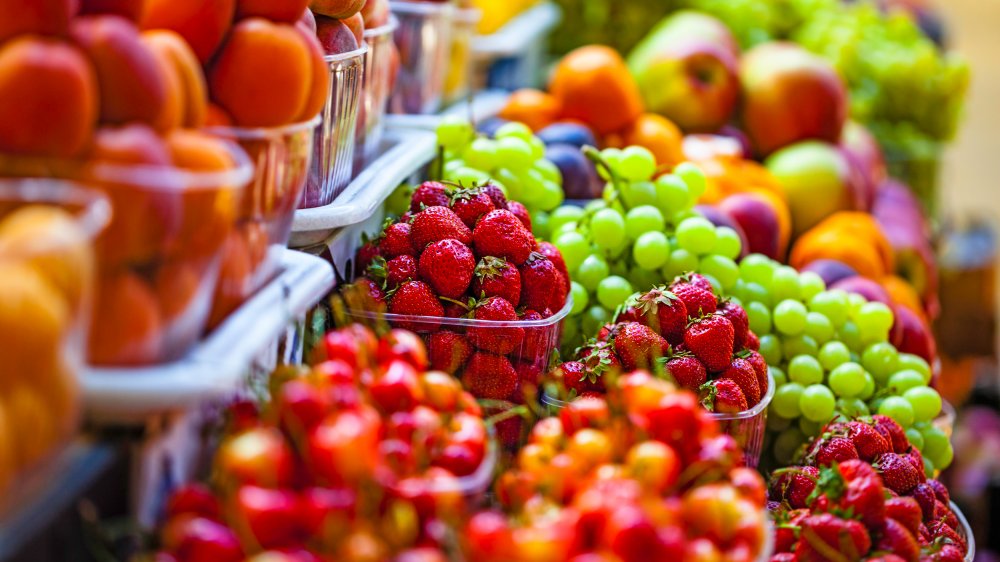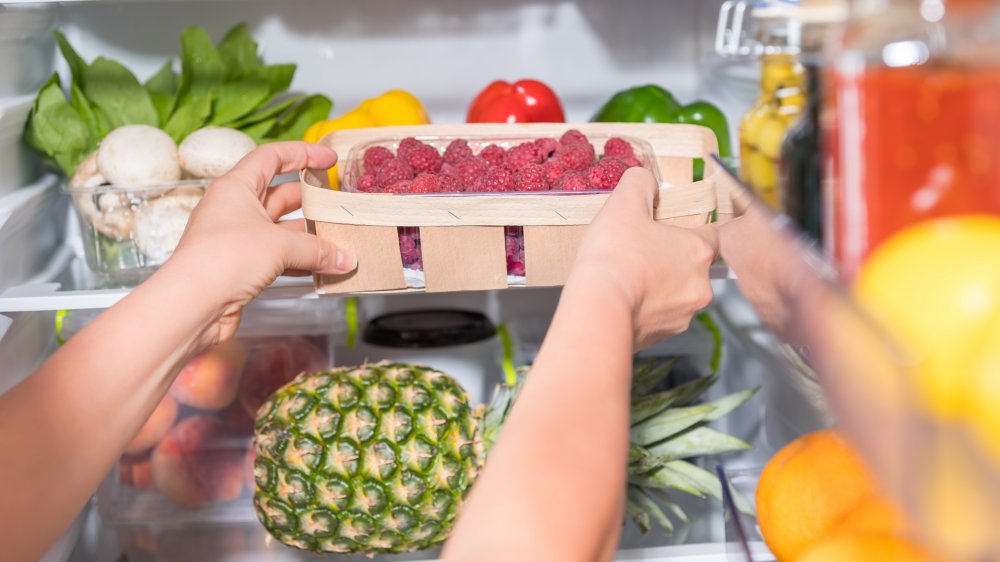Farmer Breaks Down How To Choose The Best Produce
Fresh produce is such an important part of any healthy diet. There's sometimes a problem, however, with the "fresh" part of that phrase. While produce may be ripe and tasty-looking in the store, it could quickly turn to a nasty, mushy mess in your fridge if you're not careful. So, how can you master the trick of ensuring your fruits and veggies stay fresh for longer post-purchase? Well, one thing you can do is to stick with longer-lasting types of produce such as onions, potatoes, apples, and citrus fruits. Such a diet can be a little limiting in the long run, however, and you might find yourself yearning for a bit more variety in your plant-based eating options.
When it comes to helping you select the best, and freshest produce, no matter what type of fruits and veggies you may be in the market for, who better to seek advice from than a farmer? We spoke with Sofia Dobner-Pereira, who is one of two head farmers at non-profit organic Holly Hill Farm in Cohasset, Massachusetts.
Buying the right produce at the right time
First and foremost, Dobner-Pereira advises to buy local produce, and only when it's in season. As she explains, in-season produce "will always taste the best and also be more affordable, because there is an abundance when things are in season, so farmers sell them more cheaply at that time." She gives as an example the tomato. If you buy a tomato in December, it may have been grown in Mexico or Central America, so will have come a long way to your market. Summertime tomatoes, grown closer to home, will have "a richer, red color that will taste better and fresher — and will also be priced a bit better because so many farmers will have an abundance then."
You may need to educate yourself a bit on your local climate so you'll know what is in season when. Dobner-Pereira says that in her area, mid-June brings an abundance of fresh peas, with cucumbers, summer squash, and tomatoes on the way. Growing season is likely to be different outside New England, so in your area, you may already be at peak tomato season. If that is the case, stock up and start putting those fresh tomatoes to good use right away!
Choosing and storing your produce
Once you've identified the produce most likely to be locally-grown and ripe at the time, you've still got to select the best specimens available to you. One hint may lie in the color of the fruit or vegetable. As Dobner-Pereira explains, seasonal produce should have a "richer color [that] will tell you that it is fresher and that it hasn't been sitting out as long." That deeper color also indicates the item "will also have a much better flavor and won't go bad so quickly." She does caution against purchasing anything clearly blemished, as these blemishes are a sign that the produce will spoil more rapidly. When it comes to peppers, she says to avoid any with "squishy spots, darker spots, or a wrinkled appearance." With greens, steer clear of "yellowing or any black spots," and with tomatoes, only choose the firm ones since, as Dobner-Pereira warns, "if they are too soft, they are already going bad."
As far as storing your produce goes, Dobner-Pereira advocates using the same method used by grocery stores for displaying it. For example, tomatoes need not be refrigerated, but "you do want to refrigerate greens to keep them from drying out."


